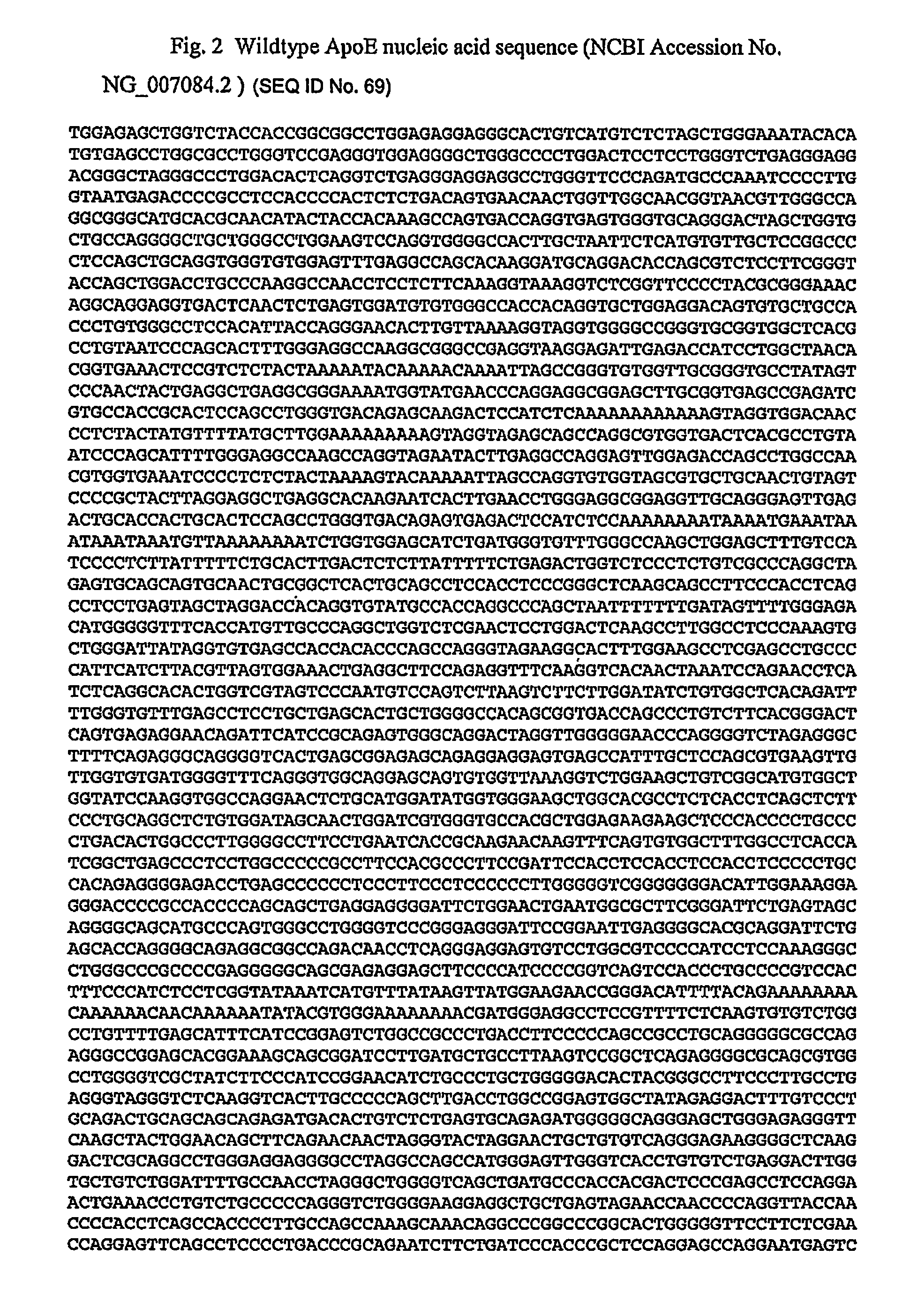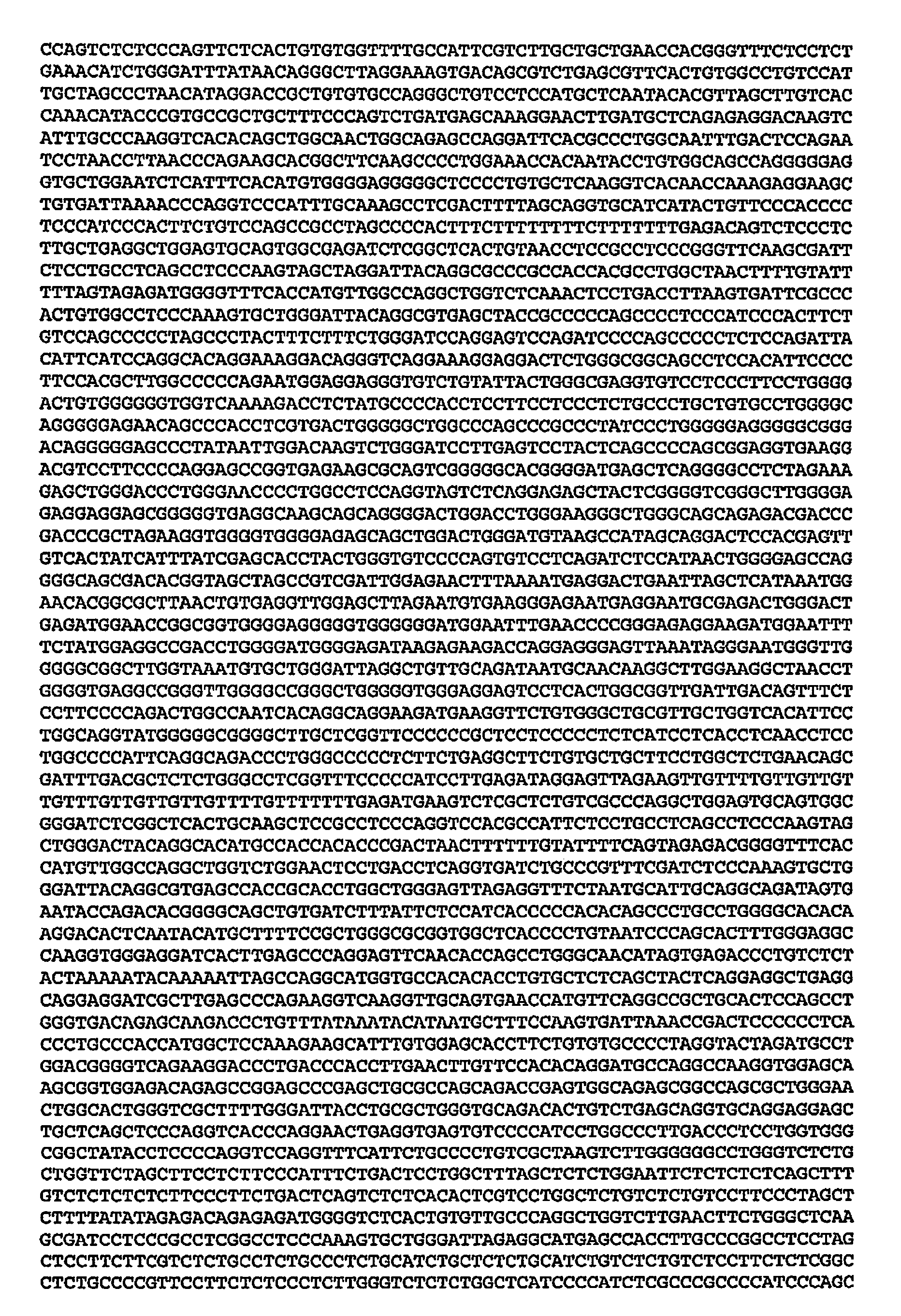Compositions and methods for treating and preventing coronary heart disease
a technology applied in the field of compositions and methods for assessing the treatment of coronary heart disease, can solve the problems of affecting the chance of heart disease in the individual
- Summary
- Abstract
- Description
- Claims
- Application Information
AI Technical Summary
Benefits of technology
Problems solved by technology
Method used
Image
Examples
example 1
Determination of Sample Population Baselines for Key Risk Factors
[0080]As summarized in Table 3, the participating subjects were elderly, with a median age of 75±3 years at baseline. Mean LDL-C levels were in the moderate-risk category (130-160 mg / dl), as defined by the United States National Cholesterol Education Program (Expert Panel. Executive Summary of The Third Report of The National Cholesterol Education Program (NCEP) Expert Panel on Detection, Evaluation, And Treatment of High Blood Cholesterol In Adults (Adult Treatment Panel III). JAMA 2001;285:2486-97). Also, approximately 50% of the men and about one third of the women reported a history of all types of vascular disease. Data on ApoE phenotype distribution in this population are also shown in Table 3. Genotype frequencies for all SNPs examined conformed to Hardy-Weinberg equilibrium (p>0.05, data not shown).
TABLE 3Study Subjects (n = 5,418)Study CharacteristicsMenWomenMean (SD)a(n = 2,621)(n = 2,797)Age (years)74.99(3.3...
example 2
Assessing Statin Dosage Using Combined SLCO1B1 and ApoE Genotyping
[0090]Elevated levels of plasma or serum low density lipoprotein (LDL) cholesterol are a major risk factor for coronary heart heard disease, a leading cause of death and disability in our society (1,2). Lowering LDL cholesterol with statin drugs has clearly been shown to inhibit cholesterol biosynthesis, and decrease the risk of CHD. Moreover the degree of risk reduction is dependent on the amount of LDL cholesterol lowering. Four factors that are clearly and significantly related to LDL cholesterol lowering response to statins were identified:[0091]1) the plasma level of LDL cholesterol,[0092]2) the ratio of lathosterol / cholesterol in plasma,[0093]3) apolipoprotein (apo) E genotype, and[0094]4) solute carrier organic anion transporter (SLCO1B1 rs4149056) genotype.
According to the invention, a novel point system was developed to predict statin induced LDL cholesterol lowering response, as shown below. This model provi...
PUM
| Property | Measurement | Unit |
|---|---|---|
| density | aaaaa | aaaaa |
| density | aaaaa | aaaaa |
| density | aaaaa | aaaaa |
Abstract
Description
Claims
Application Information
 Login to View More
Login to View More - R&D
- Intellectual Property
- Life Sciences
- Materials
- Tech Scout
- Unparalleled Data Quality
- Higher Quality Content
- 60% Fewer Hallucinations
Browse by: Latest US Patents, China's latest patents, Technical Efficacy Thesaurus, Application Domain, Technology Topic, Popular Technical Reports.
© 2025 PatSnap. All rights reserved.Legal|Privacy policy|Modern Slavery Act Transparency Statement|Sitemap|About US| Contact US: help@patsnap.com



